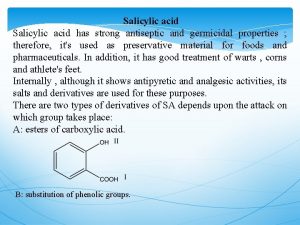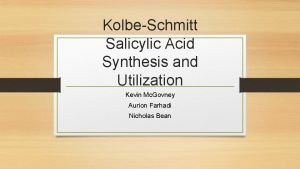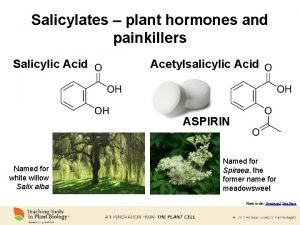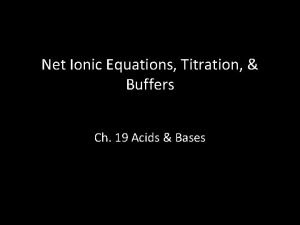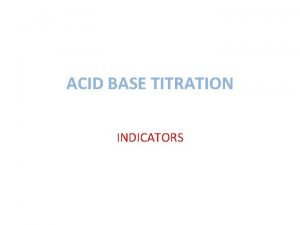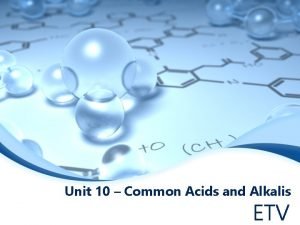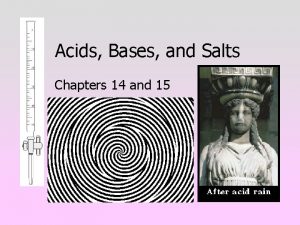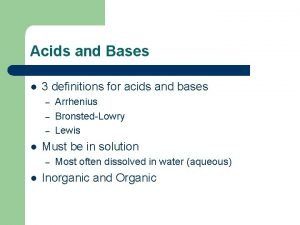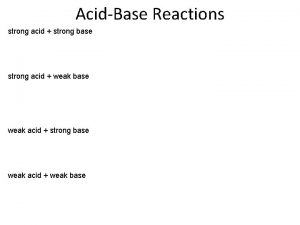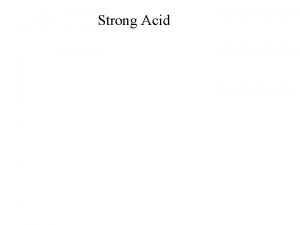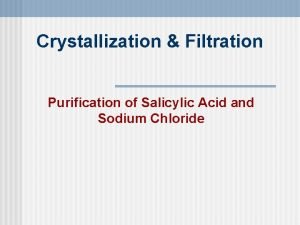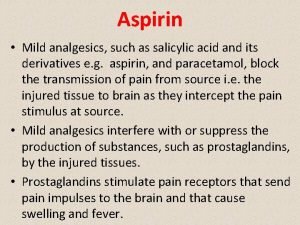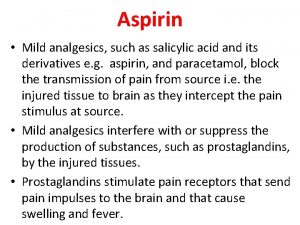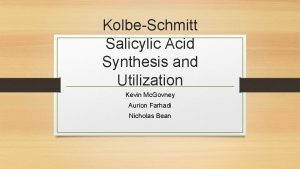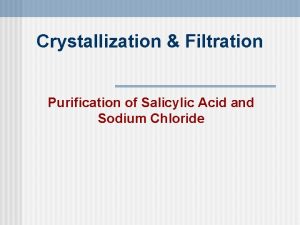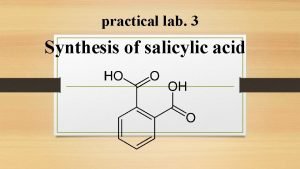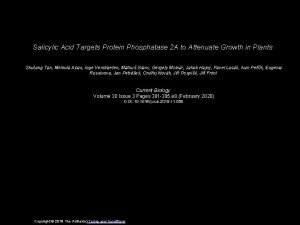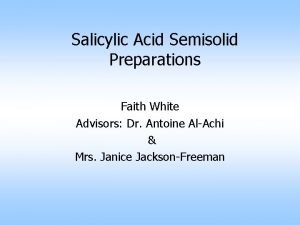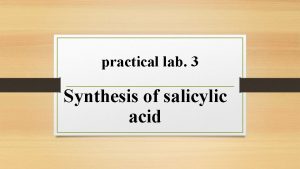Salicylic acid has strong antiseptic and germicidal properties















- Slides: 15

Salicylic acid has strong antiseptic and germicidal properties ; therefore, it's used as preservative material for foods and pharmaceuticals. In addition, it has good treatment of warts , corns and athlete's feet. Internally , although it shows antipyretic and analgesic activities, its salts and derivatives are used for these purposes. There are two types of derivatives of SA depends upon the attack on which group takes place: A: esters of carboxylic acid. B: substitution of phenolic groups.

Most of these derivatives are introduced to minimize the gastric disturbances, hemorrhage irritation and undesirable taste. The advantage of these derivatives is to increase the effects and decrease side effects. Examples: 1. Ammonium salicylate. (H. W) 2. Sod. Salicylate. (H. W) 3. Methyl salicylate. (H. W) 4. Ethyl salicylate. 5. Strontium salicylate (sod. Salicylate+bismuth nitrate). (H. W) 6. Salicylamide. (H. W) 7. Salysal (ester linkage between two molecules of SA salester-sal)

8. Salol. 9. Acetyl salicylic acid. (H. W)

Salicylic acid and acetyl salicylic acid: Salicylic acid was a good analgesic and antipyretic, but it has an unwanted teste and an irritating effect on the stomach, people could not tolerate taking SA. SA was treated with acetic anhydride in the presence of H 2 SO 4 to give acetyl salicylic acid (ASA), this compound is known as aspirin tested as better and much less acidic than SA; so that the patient could tolerate taking aspirin by mouth.

Aspirin possesses a NO. of properties that make it the most often recommended drug 1. It is analgesic, effective in relieving headache pain. 2. It is anti-inflammatory agent providing some relief form the swelling associated with arthritis and minor injuries. 3. It is antipyretic agent, it reduces fever 4. Recently it is used as prophylaxis of heart attack

Differences between SA and ASA: 1. SA gives +ve result with ferric chloride Fe. Cl 3 because it contains free OH gp. , while ASA give –ve result because (OH) gp. Of SA is acetylated to give ASA.

2. SA can not be used internally because it causes stomach irritation while ASA is less irritating. 3. Melting point of SA differs from that of ASA. 4. Salicylate anion is stabilized by intramolecular H bonding; therefore, SA is more slightly soluble in water than ASA (SA<ASA).

Preparation of salicylic acid: Industrial method: 1. Kolbe's reaction:

The OH gp. Strongly activates the aromatic ring towards electrophilic attack. electron delocalization of phenoxide anion leads to increase electron density at the position of ortho and para to oxygen ( resonance structures). The increased nucleophilicity of the ring permits it to reacts with carbon dioxide, an intermediate is formed which is keto form of salicylate anion.

2. Reimer-tiemann reaction:

Lab. Method ( alkaline hydrolysis of ester ): SA is prepared from methyl salicylate by hydrolysis of ester group with aqueous alkali (Na. OH or KOH)

The mechanism : 1. Nucleophilic addition of OH- ion to the carbonyl gp: 2. Proton transfer to anionic form of tetrahedral intermediate:

3. Dissociation of tetrahedral intermediate:

4. Proton transfer yields an alcohol and carboxylate anion:

 Salicylic acid antiseptic
Salicylic acid antiseptic Ultra violet germicidal irradiation
Ultra violet germicidal irradiation Salicylic acid ir spectrum labeled
Salicylic acid ir spectrum labeled Salicylic acid hnmr
Salicylic acid hnmr Sea breeze acne
Sea breeze acne What organism was aspirin originally extracted from
What organism was aspirin originally extracted from Salicylic acid
Salicylic acid Ephesians 6 10-20 nkjv
Ephesians 6 10-20 nkjv Strong acid and strong base titration curve
Strong acid and strong base titration curve Ionic equation for titration
Ionic equation for titration Strong acid weak base titration graph
Strong acid weak base titration graph Nh4cl strong or weak acid or base
Nh4cl strong or weak acid or base Strong acods
Strong acods 9-which acid is not considered a strong acid?
9-which acid is not considered a strong acid? 7 strong acid
7 strong acid Hcl lewis acid or base
Hcl lewis acid or base
